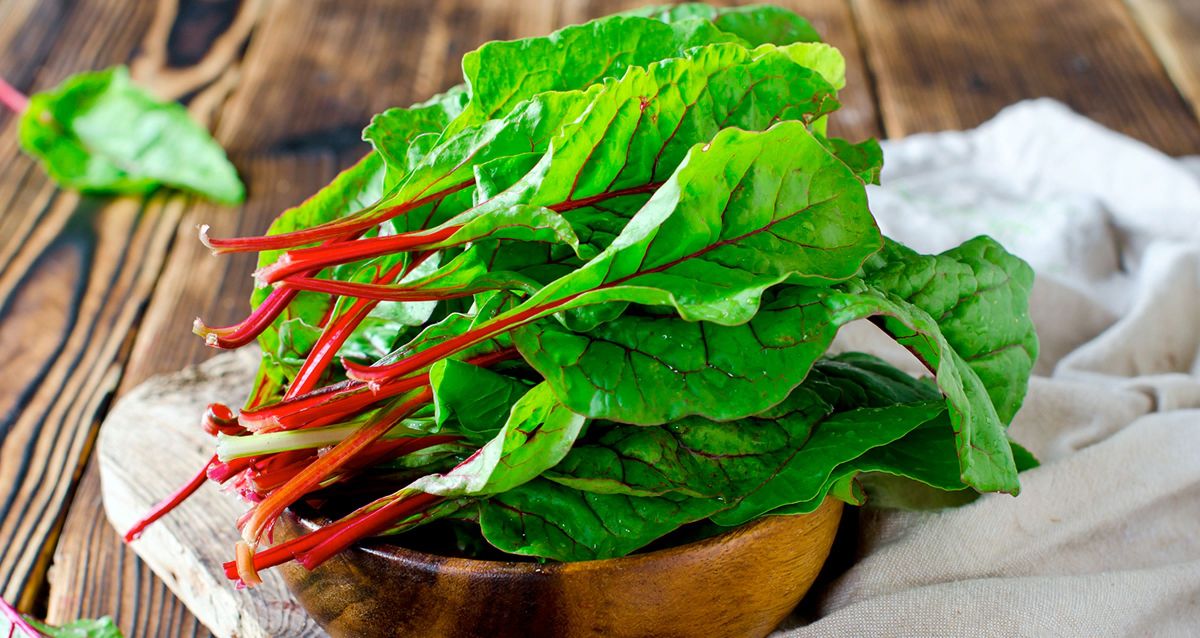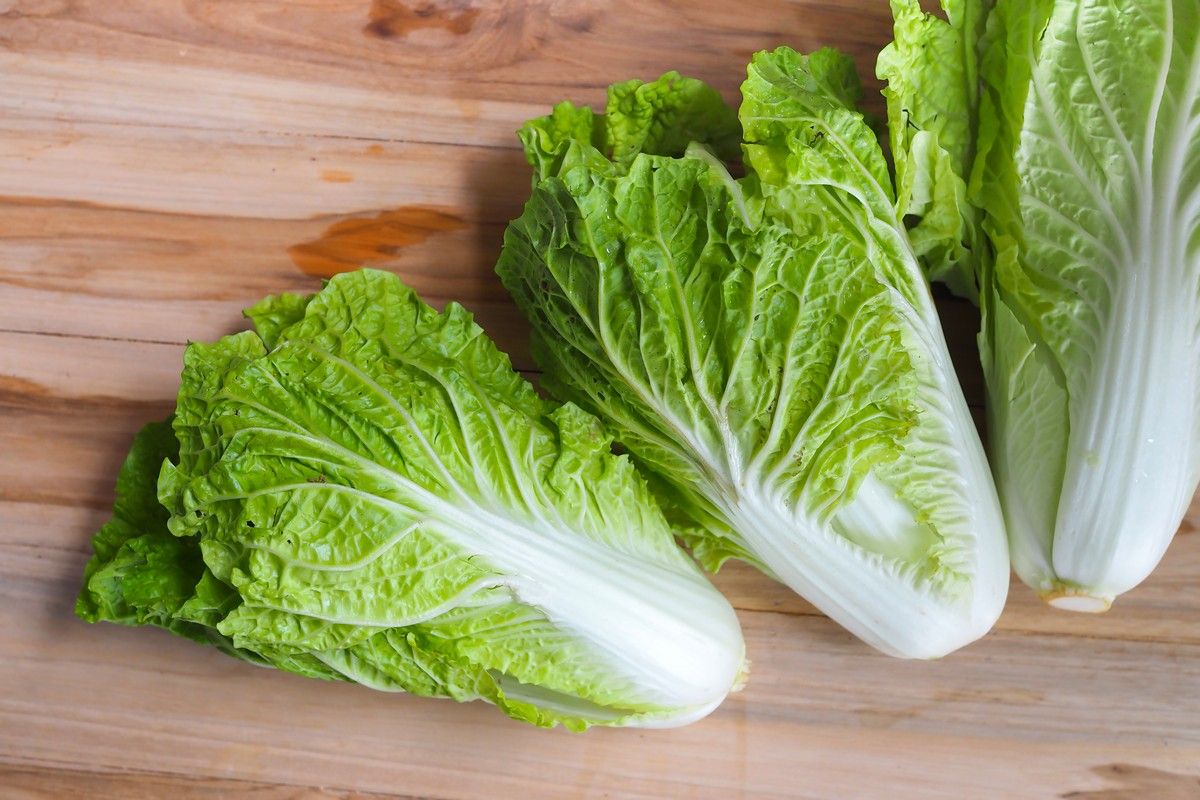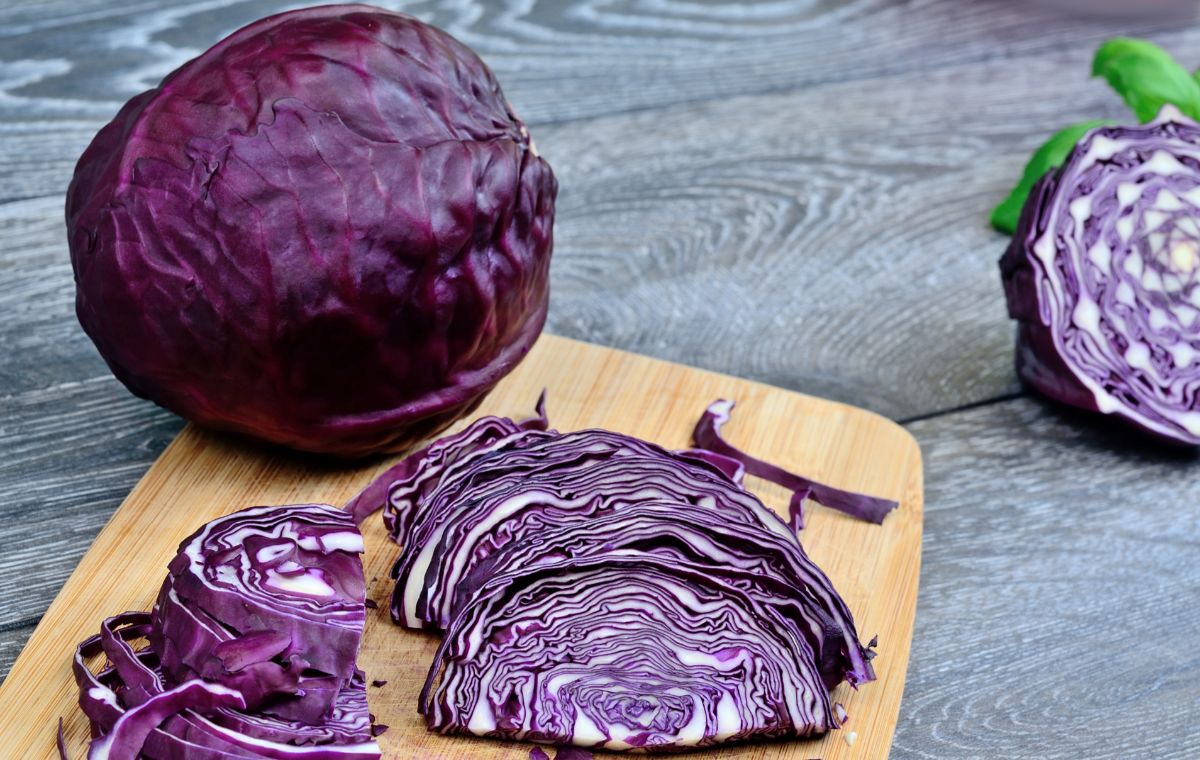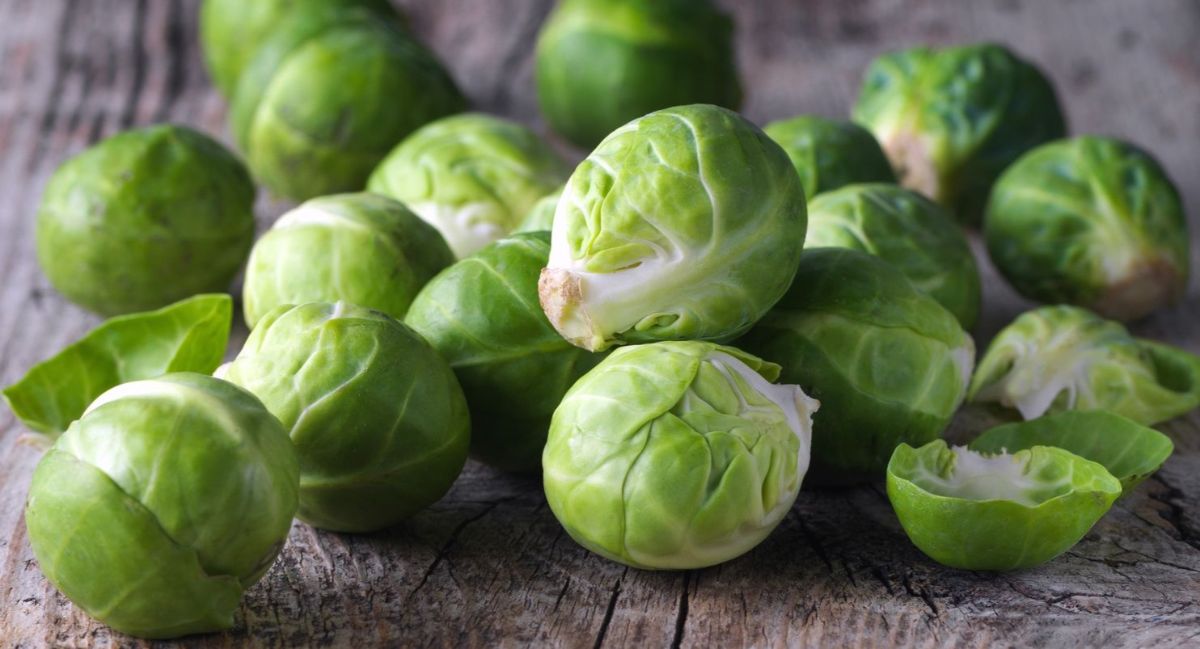8 health benefits of kohlrabi, as well as contraindications
Kohlrabi cabbage is the closest relative white cabbage . It has a juicy flesh and sweet taste, and also contains many vitamins, minerals and antioxidants. It is especially appreciated for its high content of potassium and vitamin C (kohlrabi surpasses citrus fruits in its content).
According to scientists, the use of kohlrabi brings tangible benefits to human health. It is able to reduce the likelihood of developing the most common diseases of the heart and blood vessels, endocrine and digestive systems. At the same time, the plant has practically no contraindications.
How it is useful – 8 facts
The 8 main useful properties of kohlrabi, which have an evidence base, are considered below.
1. It is a source of valuable substances
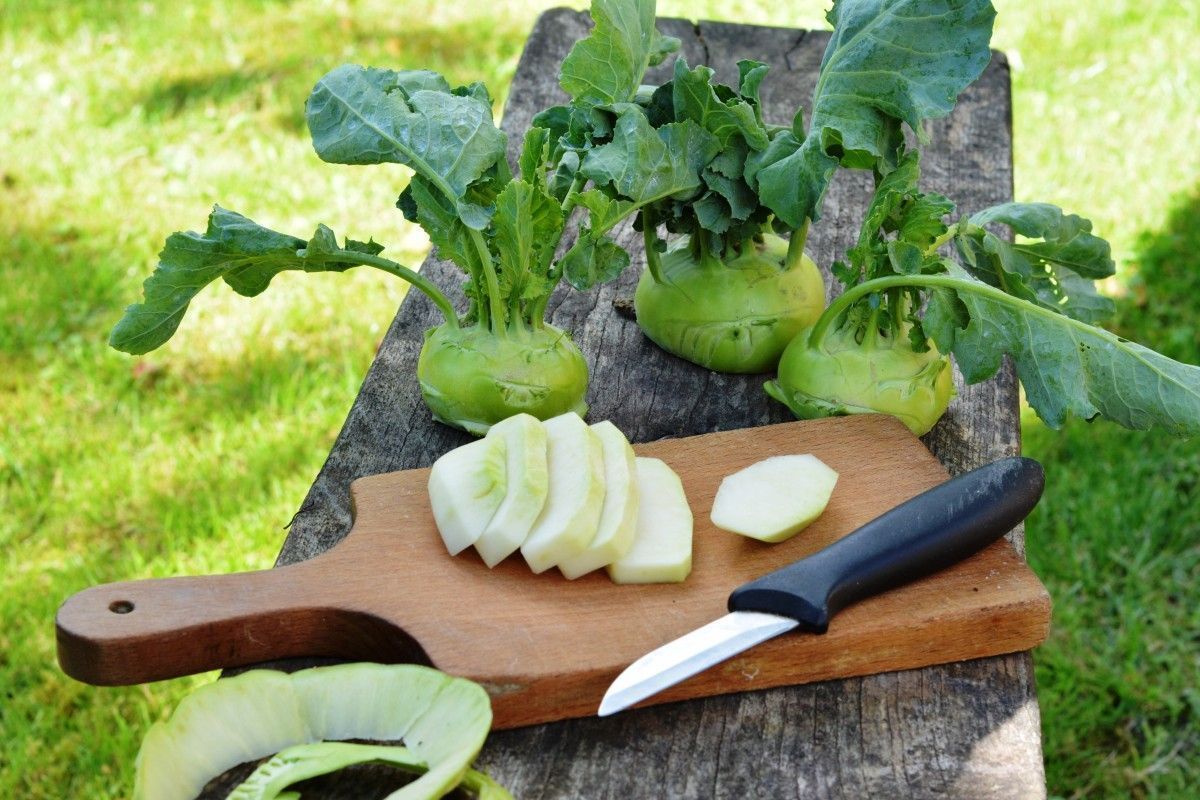
Kohlrabi is a low–calorie vegetable (27 calories per 100 grams) with a high content of fiber and water (3.6 g and 91 g per 100 grams).
In the composition available the following valuable substances (per 100 grams of plant):
| Name of the component | Percentage of recommended daily requirement |
| Vitamin C | 103 % |
| Vitamin E | 2 % |
| Vitamin B1 | 3 % |
| Vitamin B6 | 8 % |
| Folic Acid | 4 % |
| Potassium | 10 % |
| Calcium | 3 % |
| Magnesium | 5 % |
Kohlrabi also contains a number of antioxidants that prevent the appearance of oncological, cardiological and endocrine diseases.
2. Strengthening bones
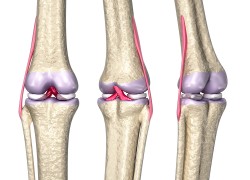 Kohlrabi cabbage is rich in potassium, as well as calcium, iron and magnesium, which are extremely important for Bone health
.
Kohlrabi cabbage is rich in potassium, as well as calcium, iron and magnesium, which are extremely important for Bone health
.
Potassium is responsible for the synthesis of osteocalcin, the main structural protein of bone tissue that supports the strength and integrity of bones. According to the information scientists, potassium deficiency is associated with the early development of osteoporosis (decreased bone density) and a high risk of bone fractures.
Kohlrabi is especially important for older age groups and women after menopause, when there is an age-related decrease in bone mineral density due to hormonal restructuring.
3. Improving the health of the digestive system
 Kohlrabi is valuable source of fiber
.
Kohlrabi is valuable source of fiber
.
Proven that fiber improves the motor function of the musculature of the gastrointestinal tract, preventing the appearance of constipation, increased gas formation and activation of putrefaction processes.
Fiber plays a special role for its ability to regulate the composition of the intestinal microflora. Against the background of adequate intake of dietary fiber, the number of pathogenic and opportunistic bacteria decreases, and the growth of beneficial microorganisms is activated.
Balanced microbiocenosis has a beneficial effect on all enzymatic processes in the lumen of the digestive tube, as well as on the work of the immune system overall.
4. Suppression of chronic inflammation
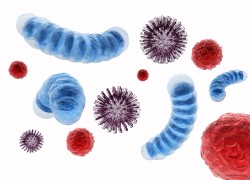 Chronic inflammation is a complex physiological process by which the body supports metabolism, provides regeneration of damaged tissues and protection from external foreign agents.
Chronic inflammation is a complex physiological process by which the body supports metabolism, provides regeneration of damaged tissues and protection from external foreign agents.
However, how claim scientists, it is chronic inflammation that increases the risk of early development of diseases from the cardiovascular and endocrine systems.
All plants of the Cruciferous family (including kohlrabi) contain antioxidant substances (kaempferol and sulforaphane), which contribute to the suppression of chronic inflammation, which confirm Japanese scientists.
Experts from the USA demonstrate that against the background of regular consumption of cabbage, the concentration of the main markers of inflammation in the blood decreases: C-reactive protein and interleukins (1, 6 and 8).
5. Improving the health of the heart and blood vessels
 Kohlrabi contains a small amount of anthocyanins, purple pigments, the use of which directly related
with a low incidence of diseases from the cardiovascular system, such as hypertension, coronary heart disease, myocardial infarction.
Kohlrabi contains a small amount of anthocyanins, purple pigments, the use of which directly related
with a low incidence of diseases from the cardiovascular system, such as hypertension, coronary heart disease, myocardial infarction.
Installed that people whose diet is rich in anthocyanins are less likely to have acute coronary syndrome.
According to According to British experts, anthocyanins also reduce systolic and diastolic blood pressure (within 5-15%), reducing the likelihood of early development of hypertension and improving its course.
6. Decrease in blood glucose
 Qingdao Hospital workers (China) experimentally installed
that all representatives of cabbage vegetables are able to reduce the concentration of sugar in blood plasma.
Qingdao Hospital workers (China) experimentally installed
that all representatives of cabbage vegetables are able to reduce the concentration of sugar in blood plasma.
This effect is based on the ability of plants to increase the susceptibility of insulin receptors of peripheral tissues (muscle and fat) to insulin, which accelerates the utilization of glucose by cells from the blood.
There was also a slowdown in the absorption of carbohydrates from the lumen of the digestive tube.
Therefore, adding kohlrabi to the diet is a way to prevent the early development of type II diabetes mellitus, as well as additional control of blood glucose levels in the presence of this pathology.
7. Increased immunity
 Kohlrabi is a valuable source of vitamin C. 100 grams of the plant contains 100% of the daily requirement of the human body.
Kohlrabi is a valuable source of vitamin C. 100 grams of the plant contains 100% of the daily requirement of the human body.
According to information experts from New Zealand, vitamin C performs the following functions:
- Increasing the resistance of barrier tissues (skin, mucous membranes) to the effects of any external infectious agents (bacteria, viruses, fungi).
- Activation of immune cells. Ascorbic acid accumulates in neutrophils, as well as in other macrophages, increasing the rate of recognition of foreign agents and triggering the processes of their destruction.
- Enhancement of division and differentiation of T- and B-link cells.
Proven that the availability of sufficient vitamin C is associated with a low incidence of acute respiratory diseases, as well as systemic infections.
8. Protection against cancer
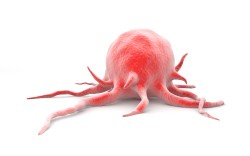 Scientists from the USA claim
that all representatives of the Cruciferous family (including kohlrabi) are potential preventive agents against cancer.
Scientists from the USA claim
that all representatives of the Cruciferous family (including kohlrabi) are potential preventive agents against cancer.
Plants contain a number of antioxidant substances that not only cause the death of malignant cells (during their division), but also reduce the damaging effects of free radicals, which is currently considered as the main cause of tissue transformation into cancer.
Harm and contraindications
 Kohlrabi is an almost harmless product. Side effects that are extremely rare include:
Kohlrabi is an almost harmless product. Side effects that are extremely rare include:
- Allergy. Allergopathologies when using kohlrabi are noted infrequently and are characterized by a mild course. Cases of cross-allergic reactions (with sensitization of the body to other representatives of the Cruciferous family) are described.
- Exacerbation or deterioration of the course of chronic pathologies of the digestive system. The vegetable contains extraactive substances that irritate the mucous membranes of the stomach and duodenum. Kohlrabi is contraindicated in the presence of chronic gastritis or duodenitis, peptic ulcer of the stomach and duodenum.
It is important to note that kohlrabi is recommended to be included in the diet during pregnancy. The vitamins in its composition (especially vitamin C and folic acid) reduce the risk of developing infectious and inflammatory diseases of the mother and fetus, and also prevent the appearance of neural tube defects.
Rules of use
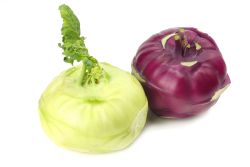 The only edible part of the plant is the stem, which has a spherical shape. The leaves are inedible.
The only edible part of the plant is the stem, which has a spherical shape. The leaves are inedible.
Preference should be given to kohlrabi in its raw form, this allows you to preserve the maximum amount of biologically active substances.
Cabbage is usually used as part of salads or as a snack. You can make sandwiches from it. It goes well with other vegetables (for example, tomatoes or peppers).
Below are a couple of simple recipes that will allow you to cook kohlrabi not only tasty, but also healthy.
1. Kohlrabi and onion salad
Ingredients:
- 500 grams kohlrabi;
- 1 medium-sized red onion;
- 50-75 grams of green pea pods;
- Sesame oil (can be replaced with sunflower oil)
- Soy sauce – to taste;
- White wine vinegar – to taste;
- 1-2 tablespoons of honey.
Cooking scheme:
- Cut the kohlrabi stem into thin petals. To do this, it is better to use a grater or a vegetable peeler.
- Cut the onion into half rings, finely chop the pea pods.
- Mix all the ingredients, season with butter, soy sauce and honey. The dish is ready!
2. Vitamin salad
You will need:
- 300-400 grams of kohlrabi;
- 3-4 medium-sized radishes;
- 100 grams of white cabbage;
- 1-2 medium-sized cucumbers;
- 20-30 grams of greens (parsley, dill);
- 150 grams of sour cream;
- 1-2 tsp mustard;
- Salt, pepper – to taste.
Cooking scheme:
- Peel and grind kohlrabi on a coarse grater.
- Chop the radishes and cucumbers into strips.
- Chop the cabbage. Add salt and rub the cabbage with your hands so that it becomes softer and juicier.
- Finely chop the greens and mix all the ingredients.
- Season the future salad with sour cream, mustard, add spices. The salad is ready.
Conclusion
- Kohlrabi cabbage is a dietary vegetable product rich in vitamins (especially vitamin C), antioxidants and minerals (especially potassium).
- Against the background of regular intake, bone tissue strengthening and increased immunity are observed. Pathologies from the endocrine, cardiovascular and digestive systems, as well as malignant tumors, are less common.
